Why we're all mad for nostalgic baking (plus six classic recipes from Australia: The Cookbook)
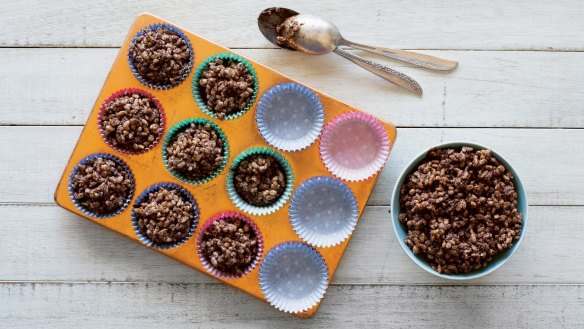
It started with empty shelves in the baking aisle at the supermarket. I personally had trouble getting my hands on glace cherries. A disaster. The baking trend moved into many of our homes and stayed there. It seems we crave things that make us feel safe and secure. And this comes in the form of baked goodness.
This desire has clearly tapped into our subconscious or maybe just our conscious. Let's not over-think it. I recently did an interview with a New York-based magazine. In this interview a psychoanalyst commented that in dark times we need to feel nurtured.
This trend isn't just viral. It's global. While Americans and other cultures look to their own culinary heritage for comfort, we look to ours. And what we have on offer here in Australia is ours and ours alone.
We find ourselves drawn to the familiar and the reliable. This is reflected in the recipes that are searched for on some of Australia's top food sites.
Recipes for lamingtons, Anzac biscuits and scones are what we want. And slices. Aussies have a collective obsession with them. While there are too many slices to mention, the flavours are constant: caramel, chocolate, passionfruit, lemon and coconut.
It ought to be noted that searches for things such as lasagne, baked potatoes, anything baked in cream and roast chook recipes have also gone through the roof. Same same, really. It's all about the things that make us feel comfy. We want the food that says,"I'm home and I'm safe".
The best-known favourites are the lamington, honey jumble and the finger bun.
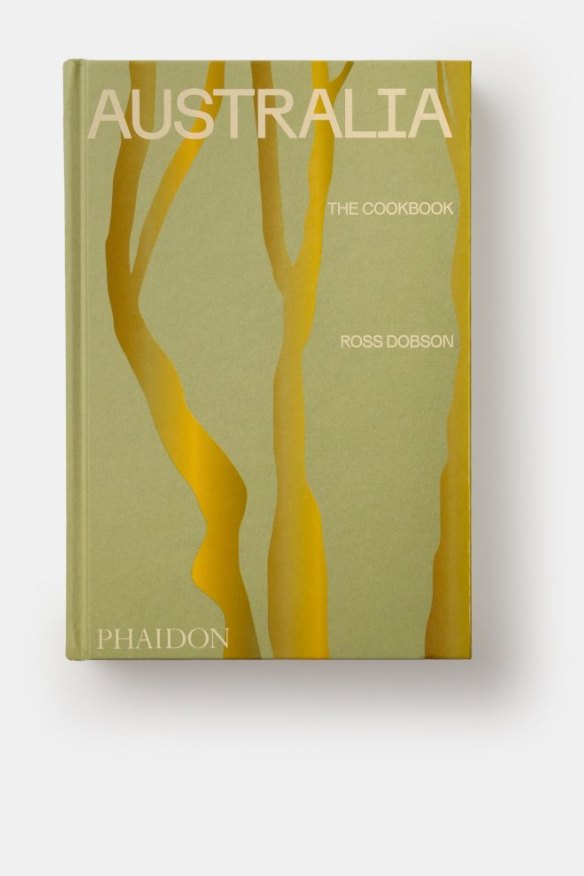
Some of these fine examples of Australian baking require some planning. The finger bun is one of these and it has become the comeback kid of classic Australian recipes.
There are other goodies, such as the honey joy and chocolate crackle, that can be made by a child.
It is how they taste that counts. Eat an Anzac biscuit hot from the oven or nibble on a decadent piece of caramel slice and your mood instantly lifts. Things won't seem so bad, after all.
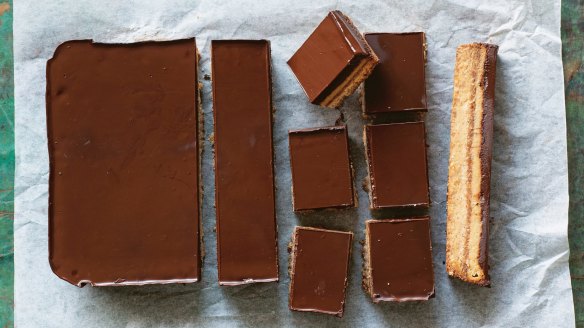
Caramel slice
This slice goes by many a moniker: caramel shortbread, caramel shortcake, caramel squares, millionaire's shortbread and millionaire's slice, but it is most commonly known as a caramel slice.
INGREDIENTS
For the base
- 125g unsalted butter, melted, plus extra for greasing
- 100g (⅓ cup plus 2 tbsp) soft brown sugar
- 150g (2 cups) desiccated coconut
- 125g (1¼ cups) plain flour
For the caramel layer
- 1 x 375g can condensed milk
- 2 tbsp golden syrup
- 40g (3½ tbsp) unsalted butter, melted
For the chocolate topping
- 200g dark cooking chocolate, broken
- 45ml (3 tbsp) vegetable oil
METHOD
- Preheat the oven to 160C fan-forced (180C conventional). Grease an 18 x 28 x 3cm slice tin or shallow baking tin with butter and line with baking paper.
- To make the base, combine the brown sugar, coconut and flour together in a large bowl.
- Stir in the melted butter until well combined and smooth, then press the mixture into the prepared pan and bake in the oven for 20-25 minutes, until golden and firm to the touch. Transfer to a work counter.
- To make the caramel layer, combine all the ingredients in a large bowl and beat with electric beaters until smooth. Pour over the base. Bake for 20 minutes, or until bubbling and golden. Transfer to a work counter and let cool.
- For the chocolate topping, combine the chocolate and oil in a small, heavy saucepan and cook over a low heat for 4-5 minutes, stirring until smooth. Pour over the caramel, tilting the pan to make an even layer, then refrigerate for 3 hours, until the chocolate layer is firm.
- Remove from the tin, cut lengthwise into thirds then crosswise into 6.
Makes 18 slices
- Also try: 50 favourite slice recipes
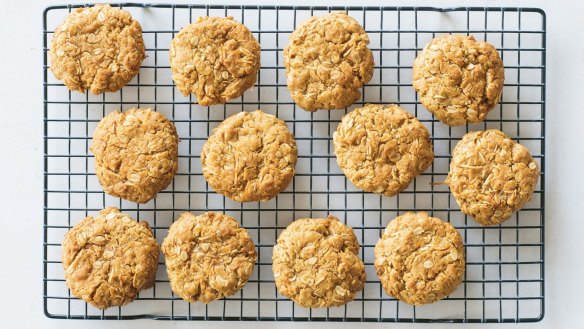
Anzac biscuits
ANZAC is an acronym for Australia and New Zealand Army Corps. Anzac Day, April 25, commemorates the day our troops landed at Gallipoli in 1915. Designed to travel long distances (several weeks by sea, in fact), Anzac biscuits can be stored for up to 3-4 weeks in an airtight container.
INGREDIENTS
- 150g (1 1/4 cups) plain flour
- 100g (1 cup) rolled oats
- 90g (1 cup) desiccated coconut
- 125g unsalted butter
- 160g (¾ cup plus 1 tbsp) caster sugar
- 60ml (4 tbsp) golden syrup
- ½ tsp bicarbonate of soda
METHOD
- Preheat the oven to 160C fan-forced (180C conventional). Line 2 baking trays with baking paper.
- Combine the flour, oats and coconut in a large bowl and set aside.
- Combine the butter, sugar and golden syrup in a small saucepan and place over a medium heat until the butter has melted. Remove the pan from the heat and set aside.
- Combine the bicarbonate of soda and 1 tablespoon boiling water in a small bowl or jug and pour into the butter mixture, causing it to foam. Stir quickly, then quickly pour into the bowl with the flour and stir with a wooden spoon until well combined.
- Put 24 tablespoons of the mixture onto the lined baking trays, leaving space for the biscuits to spread. Press down ever so lightly on each one to flatten slightly. Bake for 20 minutes, or until golden. Transfer to a wire rack to cool.
Makes 24 biscuits
- Also try: 25 classic Aussie biscuit recipes
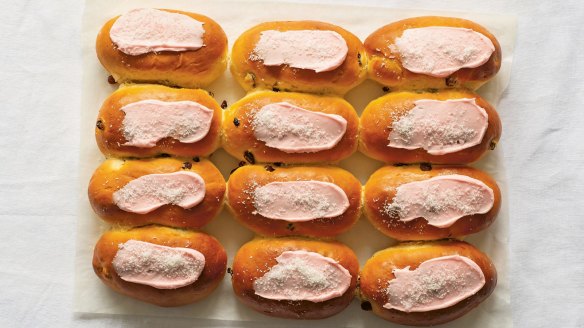
Finger buns
These moreish buns contain dried fruit. Just enough to make them feel a bit healthy. You'd be hard-pressed to see them filled with cream. More likely, they are split open and slathered in butter, with a slash of icing on the top. It is generally pink. They are sometimes finished off with a sprinkling of desiccated coconut.
INGREDIENTS
For the buns
- 375ml (1½ cups) whole milk
- 2 x 7g packets instant or active-dry yeast granules
- 110g (½ cup plus 1 tbsp) caster sugar, plus 2 tsp
- 600g (5 cups) plain flour, plus 2 tsp
- vegetable oil, for oiling
- 60g unsalted butter, melted, plus extra for greasing
- 1 egg, beaten
- 50g (⅓ cup) sultanas
- 50g (¼ cup) currants
For the glaze
- 1 tbsp caster sugar
- ½ tsp gelatine powder
For the icing
- 1 tbsp whole milk
- 1 tbsp unsalted butter
- 180g (1¼ cups) icing sugar
- pink food colouring
- 25g (⅓ cup) desiccated coconut
METHOD
- Heat the milk for the buns in a small saucepan until it is just warm to touch. If using a thermometer, this will be 40C. Pour the warm milk into the bowl of a stand mixer fitted with a dough hook. Stir through the yeast, the 2 teaspoons caster sugar and the 2 teaspoons plain flour. Leave for 10-15 minutes until the mixture is frothy.
- Oil a large bowl with vegetable oil. Combine the remaining bun ingredients in the bowl of the stand mixer and knead for about 10 minutes to make a smooth and sticky dough. Scrape the dough into the prepared bowl, cover with cling film and leave in a warm place for 1 hour, or until it has doubled in size.
- Preheat the oven to 180C fan-forced (200C conventional). Grease a large baking tray with butter.
- Divide the dough into 12 equal portions. On a lightly floured work counter, roll each dough portion into a smooth ball and stretch into a log, 12cm long. Arrange the logs on the prepared baking tray about 1cm apart.
- Cover with a clean tea towel and leave in a warm place for about 30 minutes until risen and touching. Bake in the oven for 18-20 minutes until golden, then transfer to a wire rack.
- While the buns are still warm, make the glaze. Put the sugar, gelatine and 1 tablespoon warm water into a small bowl and stir until smooth. Brush the glaze over the warm buns and leave to cool before icing.
- To make the icing, put the milk and butter into a small saucepan and heat over a low heat until the butter has melted. Remove the pan from the heat. Add the icing sugar and stir through until smooth. Stir through 1-2 drops of the food colouring to achieve a pale pink icing. Transfer to a piping bag fitted with a small nozzle or a clean plastic bag with a corner snipped off, then pipe the icing over the cooled buns.
- Sprinkle the buns with the coconut and leave for at least an hour before serving.
Makes 12 buns
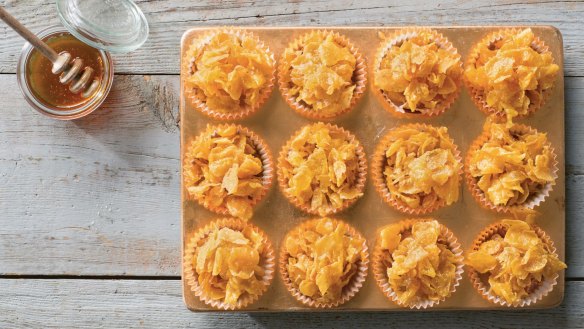
Honey joys
These crunchy and golden sparkling treats first started to appear in the 1930s. They're in a category of their own: neither a cake nor a biscuit, and not a lolly either. Not an entirely unhealthy choice for kids' party food. Minimal baking time is required and any generic cornflake will work.
INGREDIENTS
- 120g (4 cups) cornflakes
- 75g (1/3 cup) unsalted butter
- 1 tbsp runny honey
- 70g caster sugar
METHOD
- Preheat the oven to 130 C fan-forced (150Cconventional).
- Line a 12-hole muffin tin with paper cases.
- Put the cornflakes into a large bowl.
- Put the butter, honey and sugar into a small saucepan and stir over a medium heat until well combined. When the mixture boils, pour over the cornflakes and quickly stir until well combined. Spoon into the paper cases and bake for about 10 minutes. Remove from the oven and leave to cool.
Makes 12
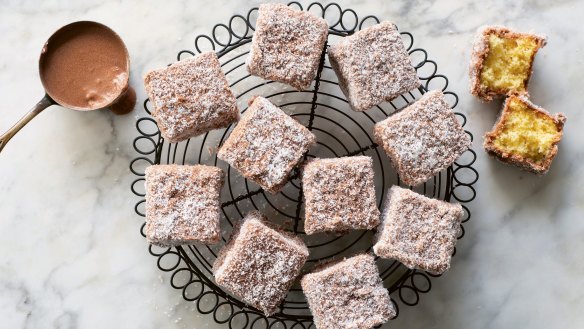
Lamingtons
There are many variations of this recipe but they all begin with the sponge cake. The sponge here will look like it doesn't have enough butter but it does – combining boiling water with butter is an old family recipe of mine. And make the cake the day before you make the lamingtons, as this will make for a far superior lammo.
INGREDIENTS
- 25g (2 tbsp) soft unsalted butter, chopped, plus extra for greasing
- 2 tbsp cornflour
- 150g (1 1/4 cups) self-raising flour
- 4 eggs
- 220g (1 cup plus 4 tsp) caster sugar
- 360g (4½ cups) desiccated coconut
For the chocolate icing
- 500g (4 cups plus 4 tsp) icing sugar
- 125g (½ cup plus 1 tbsp) unsalted butter, chopped
- 100-120ml (about ½ cup) boiling water
- 4 tsp cocoa powder
- 1 tsp vanilla extract
METHOD
- Make the sponge the day before. Preheat the oven to 160C fan-forced (180C conventional). Grease a 33 x 23 x 7cm/ baking tin with butter and line with baking paper.
- Sift the flour and cornflour onto a clean, dry plate and set aside.
- Put the butter into a small heatproof bowl with 50ml (3½ tablespoons) boiling water and stir to combine, then set aside. Put the eggs into the bowl of a stand mixer fitted with a balloon whisk attachment and whisk on medium speed for 8-10 minutes until they have tripled in volume and are pale and creamy. Slowly add the sugar and whisk until combined.
- Reduce the speed to low. Pour in the butter mixture and whisk until combined. Use a large metal spoon to add half of the flour mixture and fold through. Add the remaining flour and fold through until well-combined. Pour the batter into the prepared pan and bake for 30 minutes until golden. Leave in the tin for 10 minutes then transfer to a wire rack to cool completely. Cover with a clean tea towel and leave overnight.
- The next day, cut the cake into 12 equal squares. Set aside.
- To make the icing, combine the ingredients in a bowl and whisk with a balloon whisk to make a smooth and thin chocolate sauce.
- Spread out the coconut on a plate. Pick up a sponge square with 2 forks and dip it into the sauce, then roll it in the coconut. Repeat with the remaining squares and serve them on a platter.
Makes 12 lamingtons

Chocolate crackles
Generations have grown up with these at kids' parties, school fetes and fundraisers. This is probably the perfect thing to get kids to make as there is no chopping or cooking, aside from melting the Copha, a solid shortening made from coconut oil.
INGREDIENTS
- 250g (1¼ cups) coarsely chopped Copha or vegetable shortening
- 120g (4 cups) puffed rice cereal
- 120g (1 cup) icing sugar
- 90g (1 cup plus 2 tsp) desiccated coconut
- 40 g (⅓ cup) cocoa powder
METHOD
- Put the Copha or vegetable shortening into a small saucepan and melt over a medium heat. Remove the pan from the heat.
- Put the rice cereal, icing sugar, coconut and cocoa into a large bowl and stir to combine, then stir through the shortening until well combined.
- Spoon the mixture into 24 small paper muffin cases. Put on a baking tray and refrigerate for at least 1 hour until chilled and firm. These will keep in the fridge, stored in an airtight container, for up to 3-4 days.
Makes 24 crackles
This is an edited extract from Australia: The Cookbook by Ross Dobson. Published by Phaidon. Photography by Alan Benson. RRP $65.
